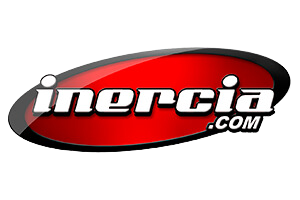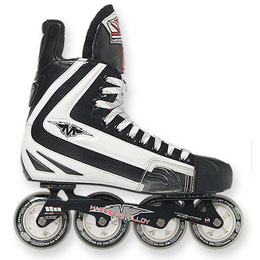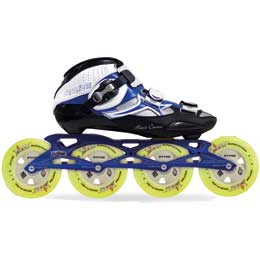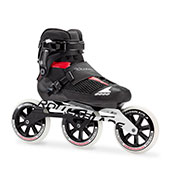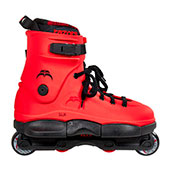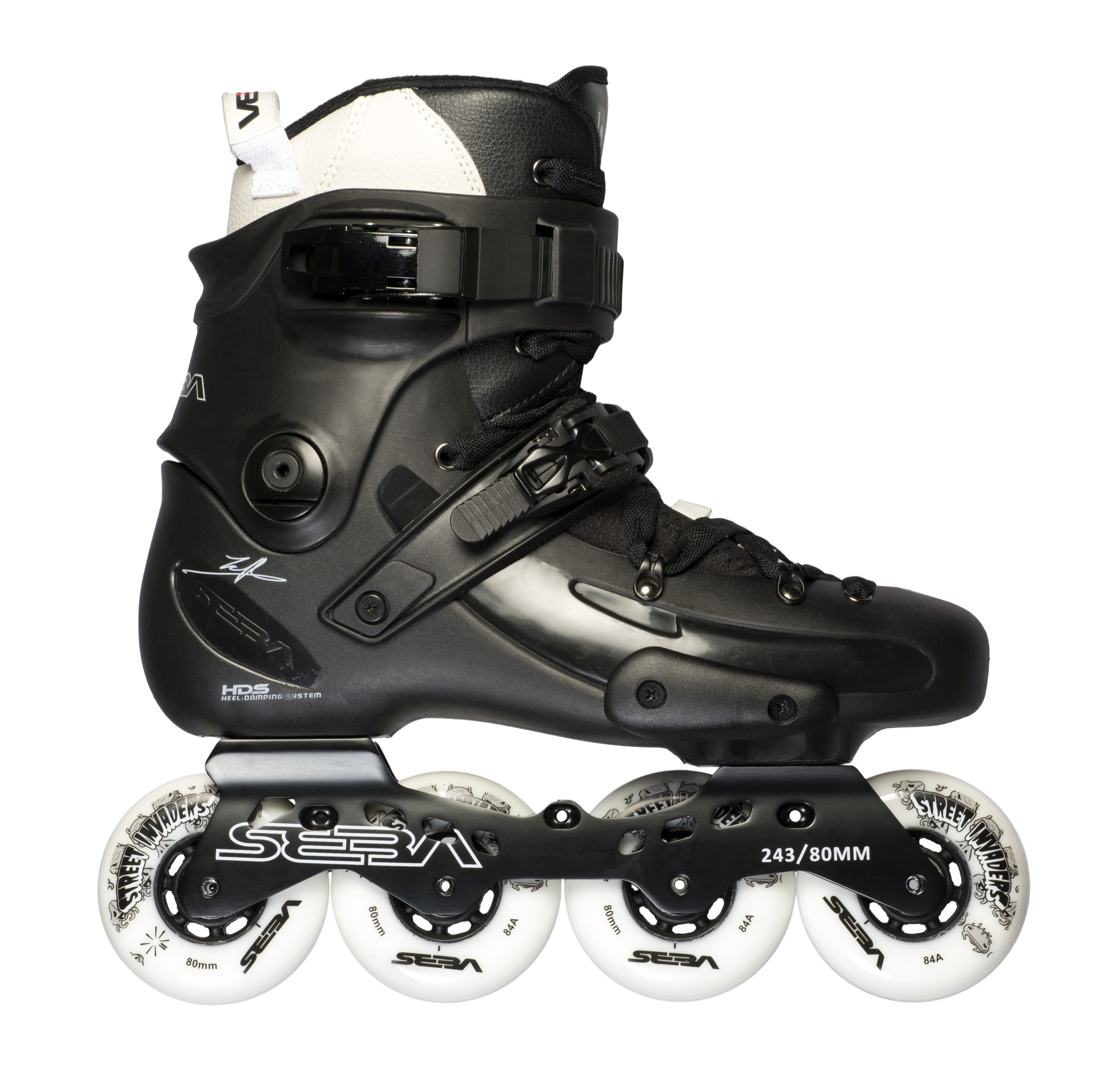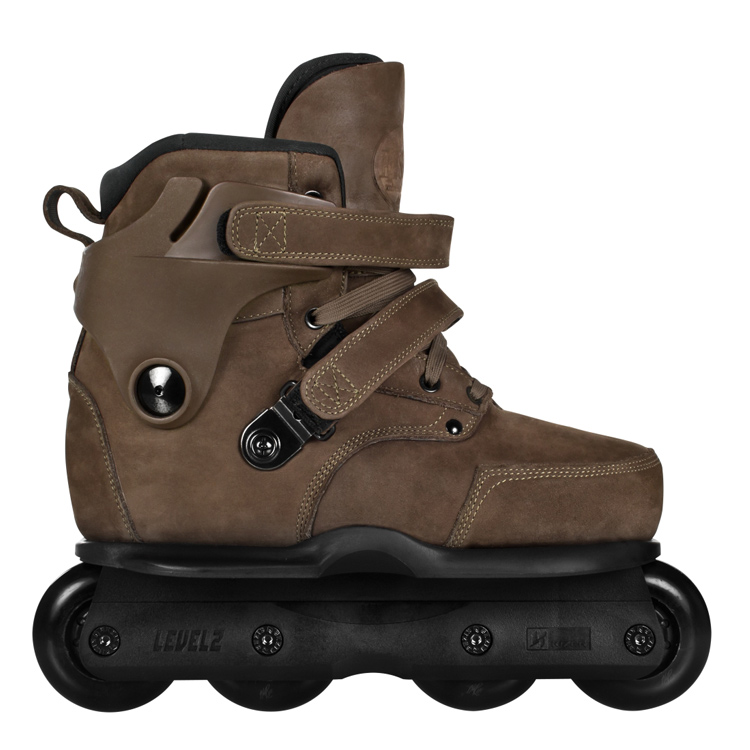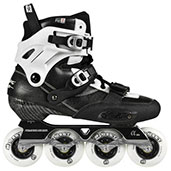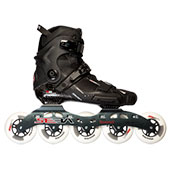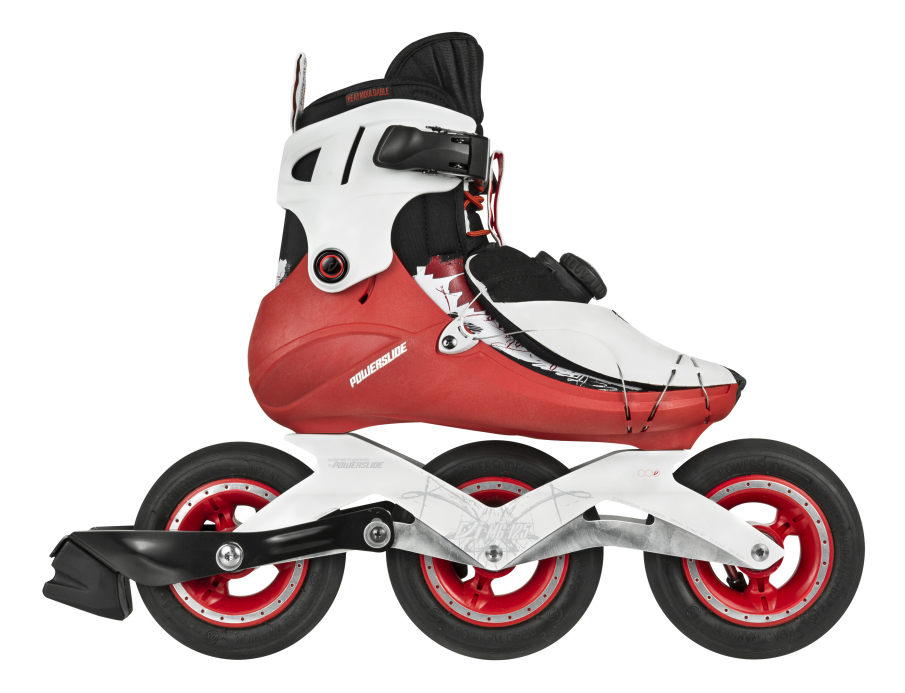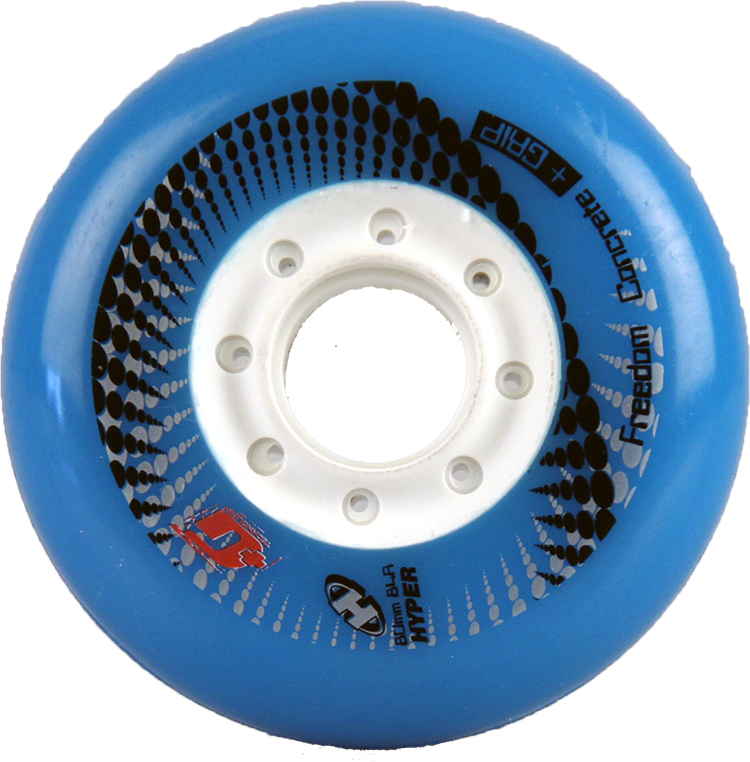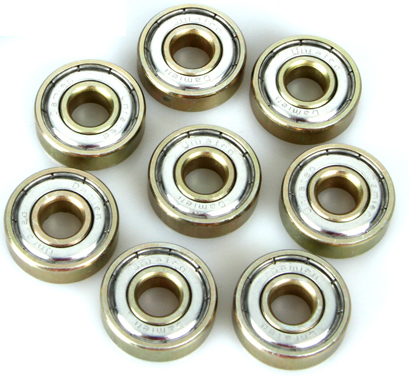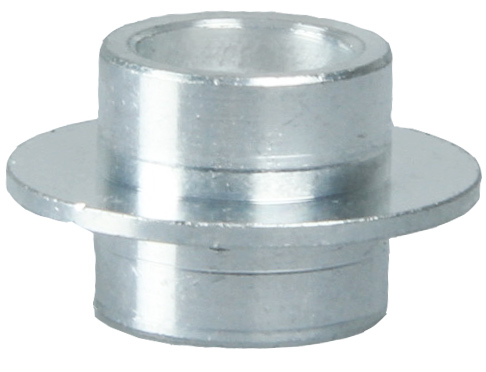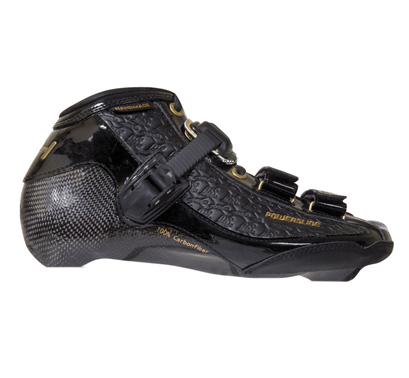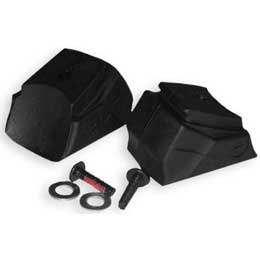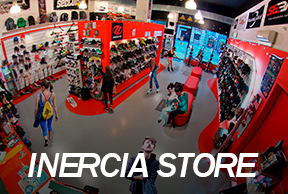Inline Skates Shopping Guide
Tips and advise on how to select the right inline skates, types and features
There are many different types of inline skates, each designed for a different purpose. When you decide to buy inline skates, it is therefore very important that you choose skates that adapt the most to our needs. This inline skate shopping guide is a small summary of all the different types of inline skates and their components that are currently available on the market and to what you should pay attention in order to find the skates that adapt the best to your needs. If you have any doubts, our team of experts will be happy to answer any questions you may have and help you to buy the skates that are best for you.
Types of inline skates
Soft boot inline fitness skates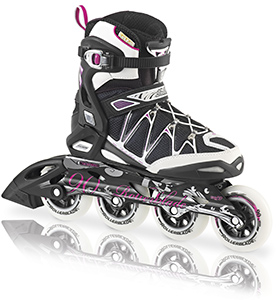
Fitness skates or skates for recreational use cover are big selection of skates with a wide price range. We are talking about skates that are great for beginners and for strolling along, to get fit or to skate at a faster speed. The skates have very comfortable and soft boots and their frame is made of plastic or aluminium. They usually have wheels of diameter between 72mm and 125 mm, depending on the range and use and they can have 3 or 4 wheels. The comfort and ventilation are their main advantage, whereas the main disadvantage is the support for the feet, which may be not enough for less experienced skaters.
Hard boot inline fitness skates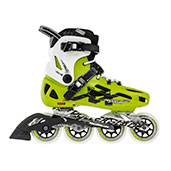
These inline skates are similar to soft boot fitness skates but with a hard plastic shell. Their boots are not as rigid as the Freeskates but give just the right amount of support that is needed by some skaters. This type of skate is very popular among skiers, as it gives them the opportunity to train off season with a sensation similar to skiing. Their advantage, as mention before, is the extra support. Their disadvantage is the extra weight and lesser ventilation compared to soft boot inline fitness skates.
As the name already indicates, those skates are designed for playing inline skate hockey, meaning that they are to be used in a hockey rink and answer some very special needs such as to quick acceleration, turn, and stop. It is not recommended to use hockey skates outside of a hockey rink, as the quality of the boot, as well as the wheels would quickly deteriorate on rough surfaces such as asphalt. They are commonly equipped with four wheels of diameter between 72mm and 80mm and sometimes with different diameters within the same skate to make them more manoeuvrable and lower. Recently models with three wheels between 90mm and 100mm have been produced. The price difference between the various models of inline hockey skates is directly related to the material used for the boot, the frame, the wheels, and the bearings.
Inline speed skates are exclusively meant for competing in speed skating competitions or to train regularly. They are designed for skaters with speed skating experience. They are distinguished by having a low leather boot reinforced with fibreglass, kevlar or carbon and a long frame. Nowadays they usually have 4 wheels of diameter 100mm to 110mm or 3 wheels of 125mm, but other wheel and shell configuration can be found, depending on the type of race, the characteristic of the skater, etc.. These skates have a high stability and they are fast but they are difficult to manoeuvre and technically very demanding.
Marathon inline skates are similar to the inline speed skates, but for less experienced skaters or for those competing on a lower level. Their boot is a little higher and more comfortable than speed skates. This helps them better support of the ankle and makes them ideal for long distances with a certain amount of comfort and high speeds. If one had to compare them with cars, then the inline speed skates would be a formula one car and the inline marathon skates would be a super sports car.
Inline aggressive skates or freestyle skates are reserved to be used on ramps, half pipes and grind rails or curbs on the street. They are very hardy and resistant skates. The boot has a wide base to lean on railing or curbs and their frame is made of plastic to better absorb shocks. They use very small, very hard wheels of diameter between 47mm and 64mm with a flat profile. They are not meant to be used for general skating and they are meant to be used in areas where a variety of tricks can be done.
Inline freeskates are by definition urban inline skates and are very versatile. They can be used to introduce us to skating as well as to go on urban strolls or even to perform jumps and various tricks. This is due to their high, hard plastic boot, that gives high support to the ankle. This support makes it easier to learn for the less experienced inline skaters and gives confidence to the more experienced, when it comes to perform various tricks. They are usually equipped with an aluminium frame with 4 or 3 wheels of 72mm to 125mm in diameter.
Inline powerblading skates could be defined as a hybrid between aggressive skates and free skates. This means that they usually have boots like aggressive skates but the frame and the wheels are that of freeskates. Therefore they are equipped with bigger and softer wheels than aggressive inline skates. What they tried to achieve is an inline skate that can be used to perform various tricks, including to grind rails, but without losing the possibility to skate with them through the whole city without sacrificing comfort and speed. They are neither as manoeuvrable as the aggressive inline skates, nor as versatile as the inline freeskates but they cover the needs of many skaters.
As the name already says, they are inline skates designed exclusively to weave around cones while performing various figures. These are skates produced with a hard carbon or fibreglass shell and, in most cases, without a liner to have maximum control and reactivity. The frame is made of aluminum and in some cases comes in banana form called “rockering”, which means that the central wheels are lower than the outer wheels. This way a higher manoeuvrability for performing tricks can be achieved. With the models where the frame is not already rockering, the skaters typically put smaller wheels on the outer positions. Depending on the skater’s shoe size, the frame can be longer or shorter, but in comparison to other inline skates the frame is always very short. Lately, inline skates for slalom have been produced with three wheels of a bigger diameter and today you can find inline skates for slalom with four wheels between 72mm and 80mm or with three wheels between 90mm and 110mm of diameter.
Inline downhill skates have been designed exclusively to skate down streets at maximum velocity. They are usually not mass produced but customized by the skaters with freeskate or slalom skate boots and a very long frame with 4 or 5 wheels. Most typical are frames with 5 wheels between 84mm and 90mm of diameter.
Off-road inline skates are suitable to skate cross-country without the need of an asphalt surface. They typically have two or three pneumatic wheels of a big diameter. Skating with the two wheel models feels similar to cross-country skiing, whereas with the three wheel models it feels more like a traditional skate. The use of poles is recommended to improve the drive and help with the balance. Sometimes they are also used for mushing.
Kids inline skates are designed, as their name already indicates, specifically for kids. They are different from adult skates, as they have a size adjustment system allowing to have 3 to 4 different sizes per skate. These sizes are adjusted by means of different systems, depending on the manufacturer. The smallest size is typically a size 25 EU and the largest size a size 41EU. There are differences within the kids’s skates, depending on which skate type they are focused on. Kids’s skates for aggressive, fitness, freeskate, slalom, speed, hockey, figure skate or even powerblading can be found. It must be noted that not all inline skates for kids are extensible, as it would be very difficult for some types of skating to include this mechanism.
Inline figure skates are designed specifically for inline figure skating practices. Even though it is a very new form, the number of skaters is increasing every year. The technique is very similar to figure skating on ice and the use is obviously only indicated for very smooth rinks. We can find inline skates for figure skating with 3 or 4 wheels, in both cases with a toe-stop to perform jumps and other pirouettes. The boot is basically the same as for figure skates on ice, meaning leather but with a lot of lateral stiffness.
Convertible inline skates are skates for which you can use your own shoes. Although there are various brands on the market, the inline skate brand Doop is the biggest representative. They are primarily urban focused and their advantage that practically any shoe can be used and therefore one can reach their destination without having to carry an extra pair of shoes around. That is why they are mainly designed as fitness or freeskates. It must be said that these skates originate from the aggressive skate brand Xsjado, that also produces skates which can be used with ordinary shoes, but for more aggressive skating.
Inline skates parts
Inline skates comprise various parts that can vary from one skate to the other. The main parts are:

The wheels of inline skates are classified mainly by three factors: diameter, hardness and profile.
The diameter can vary from 47mm to 150mm. The diameter choice depends on the use, the type of skating and personal taste. The hardness of a wheel is marked with a number followed by the letter” A”. The higher the number, the harder the wheel. Generally speaking, a soft wheel goes slower and wears out more quickly, but is smoother to skate with.
A hard wheel slides better, lasts longer and is more accurate.
As for the profile, if you look for speed or agility, an elliptical (bullet) profile should be used and if you look for stability in jumps, a flatter profile should be used.
Usually, the following diameters and hardness are used:
Fitness skates: from 72mm to 125mm, from 78A to 88A hardness and a rounded profile
Inline hockey skates: from 72mm to 80mm, from 74A to 78A hardness and an elliptical or rounded profile
Speed skates: from 84mm to 125mm, from 83A to 88A hardness and an elliptical profile
Aggressive skates: from 57mm to 64mm, from 86A to 95A hardness and a flat profile
Powerblading skates: from 72mm to 80mm, from 84A to 88A hardness and an elliptical or rounded profile
Freeskates: from 72mm to 125mm, from 80A to 88A hardness and an elliptical or rounded profile
It should be noted that there are more factors which influence the wheel’s performance, such as its bounce or composition, etc.. It would be very long and technical to go into great detail.
It also needs to be mentioned that for quality wheels, bigger than 100mm mainly for speed skating, double density wheels are used.
The bearings of inline skates are housed within the wheel and they help the wheel turn. There are mainly two types of bearings:
-608: Those are the most common ones.
-688: Also called micro-bearings. Their main feature is that they are much lighter and smaller than the 608.
Generally, the quality of a bearing is defined by a number following the acronym ABEC, ILQ or SG. The higher the number, the lower the rolling friction and therefore higher speed. Their performance will also be influenced by the material they are made of, from differently treated steel to even ceramic, of which they are produced.
Inside the wheel, there is a cylindrical part that is responsible for maintaining the distance between the bearings. This piece may be of 6 or 8mm inner diameter (depending on the screw) and made of metal or plastic. You will always get a better performance with metal spacers.
This part is mainly responsible for holding the wheels and attaching them to the boot. There are many different types. Generally, greater length means more stability but less manoeuvrability. They can be made of aluminum or plastic. Aluminium frames are more rigid, stable and have a better feel. Plastic frames absorb shock better.
Some skates have a piece built into the frame that helps to separate the wheel from the frame or, sometimes, changes its position.
There are many types of boots, Normally for fitness skates the boots are of a semi soft material, for freeskate and aggressive skates they are hard plastic, for hockey and speed skating they are leather, reinforced with kevlar or carbon fibre. They can carry powerstraps, laces or velcro straps.
The brake pad is one of the most common braking systems for inline skates. It is made of rubber and is located at the back part of the right skate. The brake pad can be removed, changed to the other foot, or placed on both feet. Not all inline skates are produced with a brake pad but universal pads, that can be adapted to virtually all types of inline skates, are available.
Inline skates straps and laces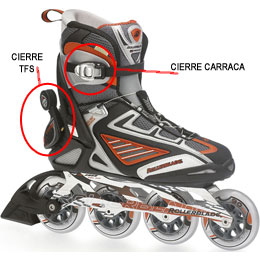
The closures and laces are responsible for adjusting the boot of the skate to your feet. Depending on the use and type of skate; straps, laces, or a combination of both are used. In principle, straps have the advantage that they are much faster and easier to close and open. The disadvantages are that they only tighten at very localized spots, they are expensive to replace and, in case of a fall, they break more easily. Laces, on the other hand, adjust more uniformly and are more shock resistant. Their disadvantage is that they are slower to tighten. Exceptions are the systems with automatic laces, such as Rollerblade’s TFS or BOA, with a simple mechanism to tighten and loosen the laces very comfortably and easily.
As a general rule:
Fitness skates: strap + laces
Freeskate skates: ankle strap + instep strap + laces
Hockey skates: only laces
Speed skates: micrometric straps + laces
Aggressive skates: ankle strap + laces
How to choose the correct size for your inline skates
One of the most common questions, especially when online shopping, is which size to choose when buying inline skates. Obviously it best to try them on, not only to see whether the size is the correct one, but also to see if they are comfortable.
In any case we have prepared a tutorial to help you choose the correct size for your inline skates.
Click HERE for more information.

 Español
Español